丹麦语的数词是较为复杂的,它可以看成是三种毫无联系的系统的混杂。主要不规则是一些数词利用陈旧的词形构成,现代写法从字面上不遵守运算的逻辑,而且很多数词还有长词形和短词形之分,年长一辈用完整形式,年青一代则倾向于使用简略的形式,这些简略的形式是由古语的分数词而来,与现代所表达的含义完全背道而驰。邻近的瑞典人和挪威人(同为北日耳曼语言的瑞典语和挪威语都采用十进制)常谑称丹麦语数词为世界上最复杂和愚蠢的数词系统
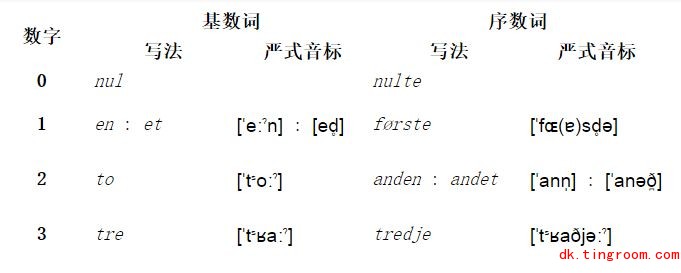
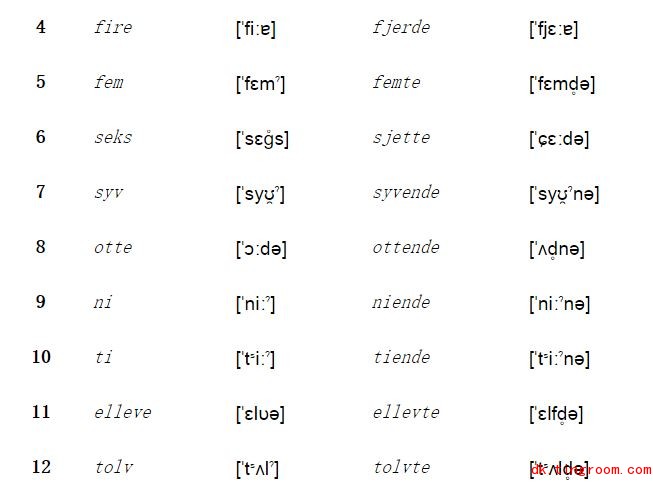
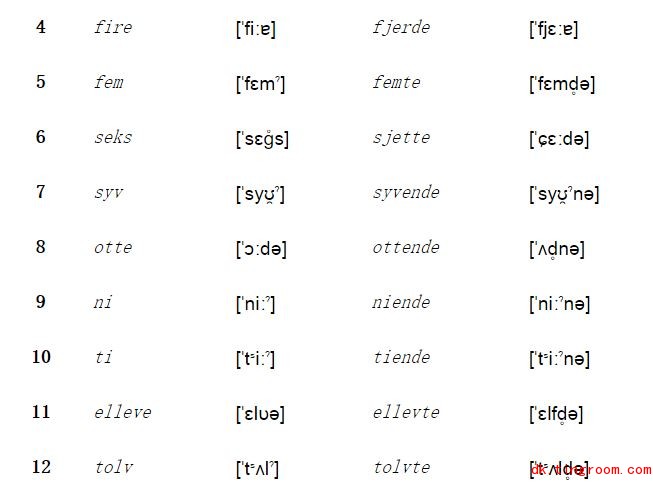
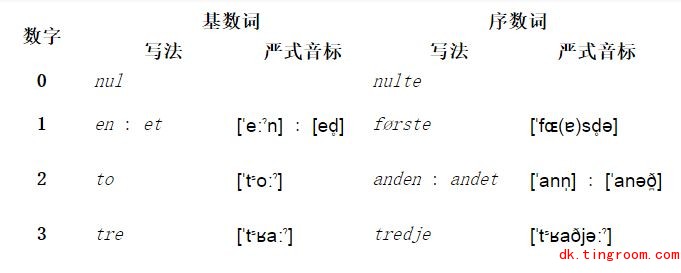
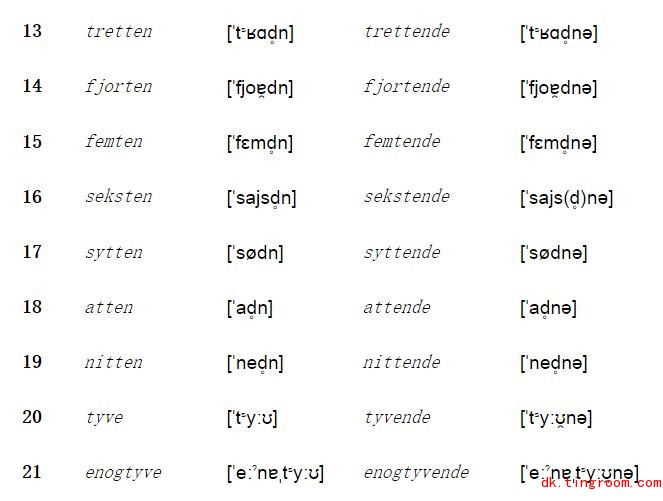


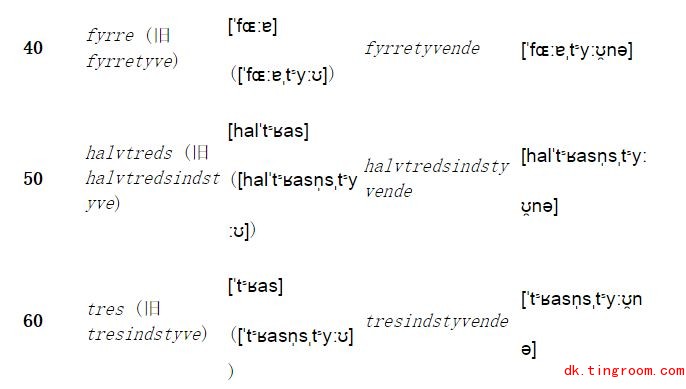
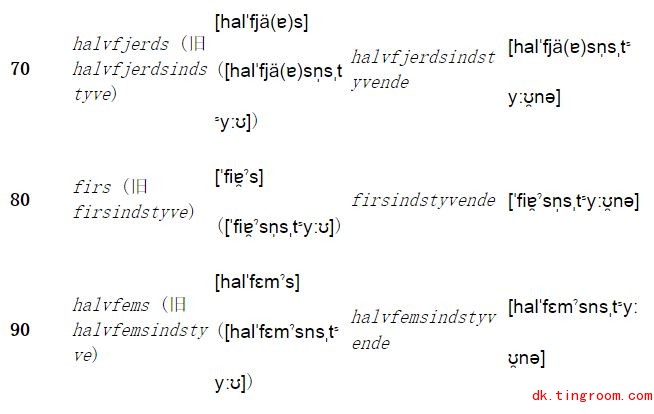
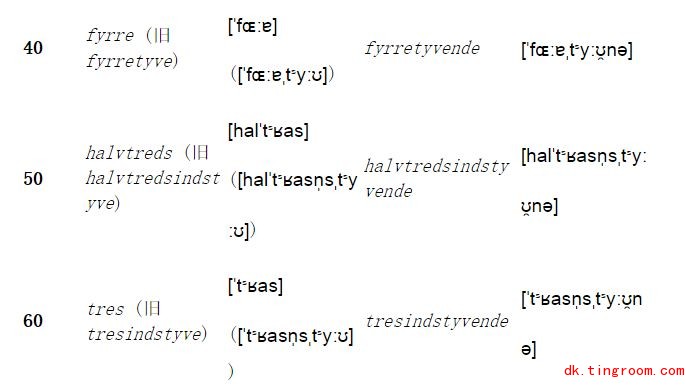
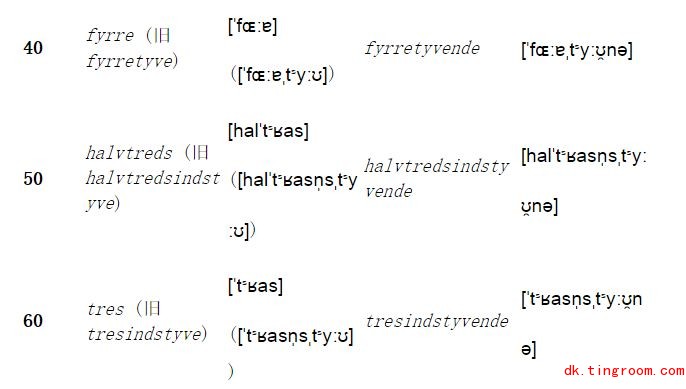

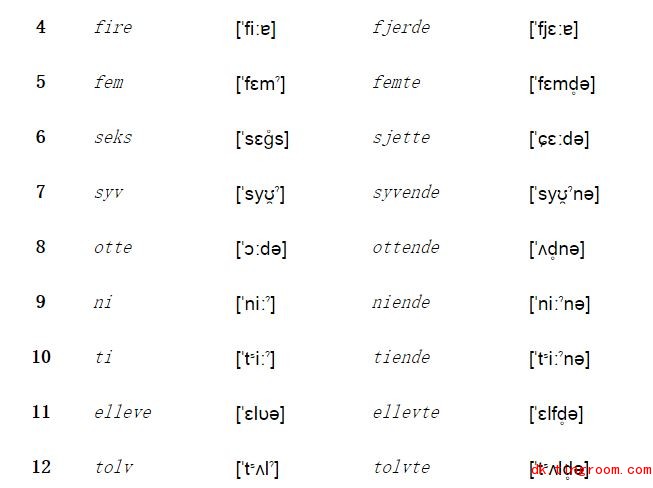
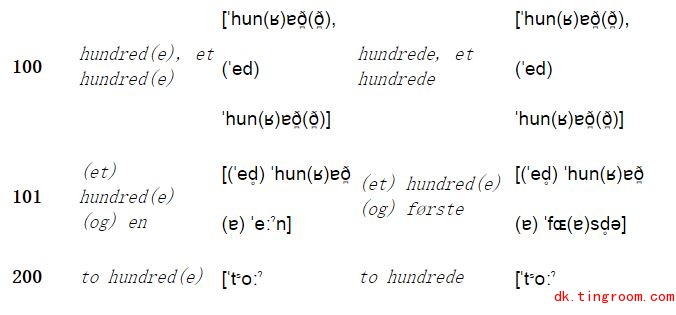
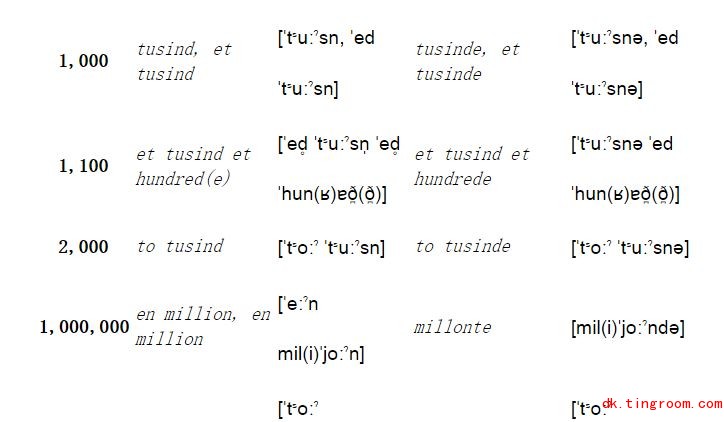
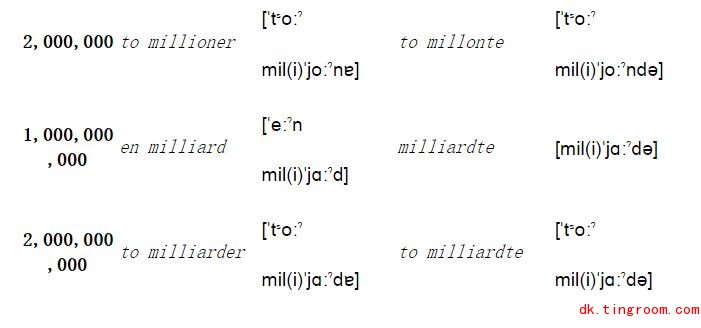
可见,丹麦语中40以下的数词是以10为基数构成的,与英语类似,但40以上的数词 则是以20 为基数构成的,例如五十 halvtred-s(inds-tyve) 意为 2½ x 20 ,即“两个半个二十”、 六十 tre-s(inds-tyve) 即 3 x 20、 七十 halvfjerd-s(inds-tyve) 即 3½ x 20、 八十 fir-s(inds-tyve) 即 4 x 20、 而九十 halvfem-s(inds-tyve) 即 4½ x 20。 其中 halvtredje、halvfjerde 和 halvfemte 分别是 2½、3½ 和 4½ 的旧称,字面含义分别为“半个第三”、“半个第四”和“半个第五”。这些分数词在现在则称为 to og en halv(二和半)、tre og en halv(三和半)等。至于 1½,则仍然按照旧法称为 halvanden(半个第二)。 表示四十的 fyrre 或 fyrretyve 从字面上看似乎是由 fire(四)与 tyve(二十)构成的,应该表示“八十”。但实际上它不属于二十进制系统。其中 tyve 一部分是 ti(十)的旧复数形,fire 一部分则表示“四”,合在一起表示“四个十”。类似地,表示三十的 tredive 也是由 tre(三)和 ti(十)的旧复数形组合成的数词
复合数词中用到 -og- 连接,它源自连词 og(和)。复合词中个位放在十位前:toogfyrre(42) = to-og-fyrre(二和四十);百位则放在个位和十位前:to hundred (og) femoghalvfjers(275),类似德语(zweiundvierzig (42),zwei Hundert fünfundsiebzig (275))但与邻近的瑞典语(fyrtiotvå (42), tvåhundrasjuttiofem (275))不同。再如,“七十三”的全称为 treoghalvfjerdsindstyve,字面意思即“三和半个四个二十”,年青一代则多称为 treoghalvfjerds。 法语、布列塔尼语、威尔士语、阿尔巴尼亚语和巴斯克语等其他欧洲语言也有二十进制的痕迹。这一数词系统的来源不很清楚,有学者认为是被印欧语取代的原欧洲语底层的残迹,也有学者认为这是在中世纪时创制的。
 英语
英语 日语
日语 韩语
韩语 法语
法语 德语
德语 西班牙语
西班牙语 意大利语
意大利语 阿拉伯语
阿拉伯语 葡萄牙语
葡萄牙语 越南语
越南语 俄语
俄语 芬兰语
芬兰语 泰语
泰语 对外汉语
对外汉语